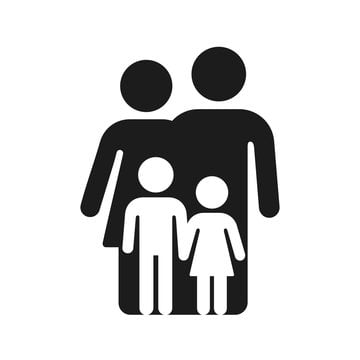Mastering Communication: Strategies for Clarity and Conciseness
Effective communication is the cornerstone of success, impacting personal relationships and professional endeavors alike. This article explores practical strategies to overcome common communication barriers and foster clear, concise interactions. Let's delve into the techniques that will elevate your communication skills.
Active Listening: The Foundation of Understanding
Active listening transcends merely hearing; it involves fully engaging with the speaker. Maintain consistent eye contact, offer subtle nods of acknowledgement, and pose relevant questions to demonstrate your attentiveness. This respectful engagement fosters deeper comprehension and strengthens relationships.
Selecting the Optimal Communication Channel
The choice of communication medium significantly impacts effectiveness. Face-to-face conversations are ideal for complex or sensitive matters, allowing for immediate feedback and the interpretation of nonverbal cues. Conversely, email or text messaging serves as efficient tools for quick updates or straightforward information sharing. Selecting the appropriate channel ensures your message reaches its intended recipient with optimal clarity.
Decoding the Power of Nonverbal Communication
Communication extends beyond spoken words. Nonverbal cues, including facial expressions, body language, and gestures, profoundly influence message interpretation. Being mindful of both your own nonverbal signals and those of others is crucial for accurate communication and avoiding misinterpretations. Develop your awareness of this often unspoken language.
Clarity Through Simple and Accessible Language
Employing jargon or overly complex language creates barriers to understanding. Prioritize simple, concise language that resonates with your audience. Avoid technical terms unless absolutely necessary, and always strive for universal comprehension. Clear communication ensures your message is easily understood by all.
Empathy: Bridging the Gap Between Perspectives
Effective communication necessitates empathy – the ability to understand and share the feelings of others. By stepping into another's shoes and considering their perspective, you build bridges of understanding and foster a more collaborative and respectful communication environment.
Seeking Clarification: Embracing Open Dialogue
Never hesitate to ask for clarification if any ambiguity arises. Seeking further explanation prevents misunderstandings and promotes a more open and transparent dialogue. Open-ended questions encourage detailed responses and a deeper understanding of the topic at hand.
Navigating Cultural Nuances in Communication
Our increasingly globalized world necessitates awareness of cultural differences in communication styles. Gestures, norms, and even conversational approaches vary significantly across cultures. Educate yourself on these nuances to avoid misinterpretations and ensure respectful interactions with individuals from diverse backgrounds.
Minimizing Distractions for Focused Engagement
In today's technology-driven world, distractions abound. However, undivided attention is paramount for effective communication. Putting away mobile devices and minimizing other distractions demonstrates respect and enhances understanding. Give your full attention to the speaker and the conversation.
Cultivating Patience and Respect in Communication
Effective communication demands patience and mutual respect. Avoid interrupting, allowing each participant to fully express their thoughts. Treating others with respect, regardless of differing opinions, creates an environment conducive to productive dialogue and mutual understanding.
Mindful Speaking: A Path to Clear Articulation
Before speaking, take a moment to organize your thoughts. Mindful speaking ensures clarity and confidence in delivery. Avoid rambling or going off-topic; focus on the central message to ensure your points are communicated effectively and efficiently.
Constructive Feedback: Fostering Growth and Improvement
Feedback should be constructive, focusing on behaviors and actions rather than personal attacks. Highlight both strengths and areas for improvement, offering specific suggestions for growth. Constructive feedback encourages open communication and facilitates personal development.
Adapting to Diverse Communication Styles
Individuals possess unique communication styles; adapting your approach is crucial for effective interactions. Some prefer directness, while others favor a more indirect and diplomatic style. Observe and adjust your approach accordingly to ensure clear and comfortable communication.
Harnessing the Power of Visual Aids
Visual aids like charts, graphs, or images enhance understanding, particularly with complex information. They provide a visual representation that complements verbal communication, reinforcing key messages and making complex information more accessible.
Learning from Communication Missteps
Communication isn't always flawless. Instead of dwelling on mistakes, view them as learning opportunities. Reflect on what went wrong, identify areas for improvement, and adjust your communication approach accordingly.
Seeking External Feedback for Continuous Improvement
Regularly seek feedback from trusted colleagues, friends, or mentors to gain valuable perspectives on your communication skills. External insights provide crucial feedback and identify areas for ongoing refinement and development.
By implementing these strategies, you can significantly enhance your communication skills, fostering clearer, more concise, and ultimately, more effective interactions in all aspects of your life. Embrace these principles to unlock the full potential of communication and build stronger, more meaningful connections.



